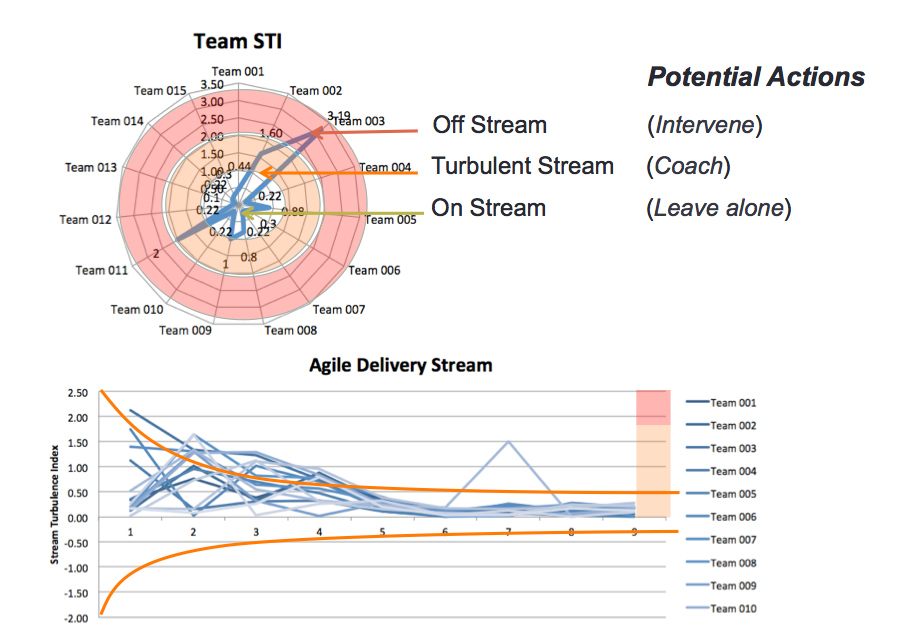Managing agile projects and product delivery requires a transparent and scalable approach to examine progress while addressing planning uncertainty.
Every team has a finite capacity to deliver working software within a Sprint. The capacity, which is measured in velocity points, varies in response to the effort of converting it to working software during that point in time and the team.
In 2015, VersionOne reported in its 9th annual State of Agile Survey that 59% of respondents measure day-to-day success based on Velocity while 58% measured agile success by On-Time Delivery. It is worth mentioning that Velocity was not intended to measure team success, instead it is intended as an agile planning tool.
Ok so how can you use agile metrics to understand what is going on?
Velocity and Turbulence face off
In the charts below you can see the Velocity and Turbulence of five agile teams.

What can you infer about the team’s ability to deliver from the velocity graph?
If you answered anything other than “nothing” then please check https://www.mountaingoatsoftware.com/blog/know-exactly-what-velocity-means-to-your-scrum-team andhttps://www.versionone.com/agile-101/agile-project-management-customer-management-best-practices/agile-scrum-velocity/ for explanation and use of agile velocity.
What can you infer about the team’s ability to deliver from the Turbulence graph?
I am assuming your reaction would be, I do not know how to read it, and you would be right :) This is a concept from Agile Stream Framework (ASF) (www.agilestream.how) and it relates to the consistency by which teams’ planned estimate approaches the actual delivery. The measure is called Steam Turbulence Index (STI). This is how to read it: an STI of zero means the team delivered exactly what they were planning for, an STI of 1, their plan was off by one Sprint, and STI of 10 they were off by 10 Sprints.
Now that you can read it, the Red and Yellow teams may need some help! And actually Yellow would be the first team that I will offer a helping hand to.
Stream Turbulence Index (STI)
ASF introduces Stream Turbulence Index (STI) as the main unit of measure and can be inspected at any stage in the software development life cycle. ASF introduces the concepts of delivery streams as being On Stream, Turbulent Stream or Off Stream. On Stream teams have better estimation and delivery ratio (STI), Turbulent Stream teams could benefit from coaching or in the midst of an CI experiment, while Off Stream teams have large STI and add a considerable variance to the estimated delivery dates.

STI in radar view, highlighting delivery uncertainties by teams
STI in line view, showcasing a decline in delivery uncertainty as teams and organization mature.
What's next?
If you are interested more in Agile Stream framework then visit www.agilestream.how.
